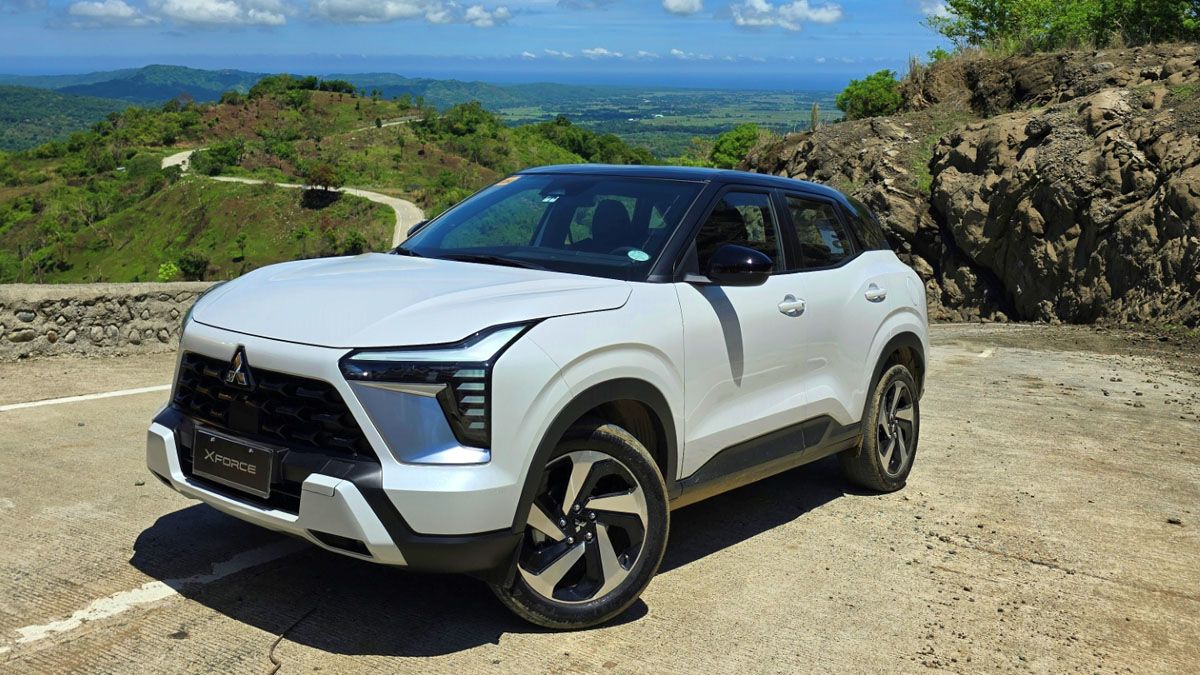
With the increasing demand for small SUVs, Mitsubishi recognized an opportunity to diversify its lineup and Mitsubishi fans missing the ASX now have a new option available in the market. Mitsubishi Motors has introduced the XForce, a new contender in the compact SUV segment that slots in between their Xpander and Montero Sport models. It aims to capture the growing market of compact SUV enthusiasts with its new-generation styling, practical features, and focus on driving dynamics. Allan Cruz, Senior Manager for Product Planning, expects sales of 7,000 units of the XForce annually.
Design and dimensions
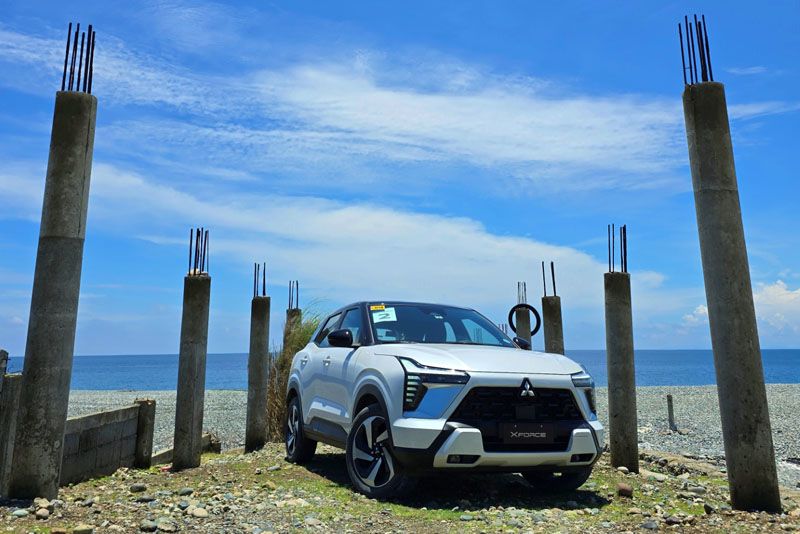
The Mitsubishi XForce stands out with its bold and angular design. Measuring 4.3 meters in length, 1.81 meters in width, and 1.66 meters in height, its sizing generally hits the middle ground for vehicles in its class. It prominently features the Dynamic Shield front aesthetic, bumped up a notch on the aggression scale, and displays a slight evolution of the brand’s signature design language. The broad-shouldered fenders and black roof give it a whole lot of presence and the 18-inch wheels (which look very familiar to another crossover’s wheels) give it a nice, well-squared-off appearance. The black roof adds sophistication and contrasts nicely with the body color, making the XForce stand out in the crowded market. The front of the X-Force boasts T-shaped LED headlights and daytime running lights (DRLs) that are well-integrated into the design, creating a clean and cohesive look. It’s nice to see that Mitsubishi has taken away very little from the XFC concept car’s lines and external features. The high ground clearance and short overhangs improve its off-road capability, while the wide track and low center of gravity enhance its on-road manners.
Interior and technology
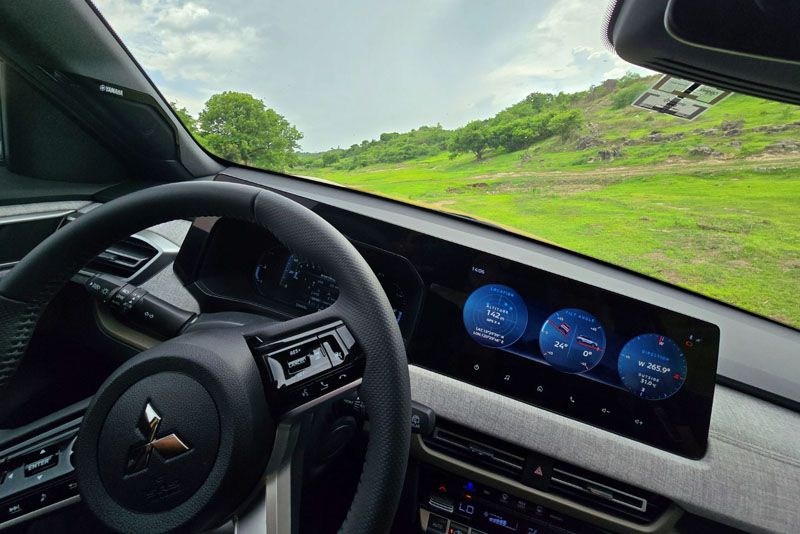
Inside, the XForce offers modern technology and practical features designed to appeal to the ASEAN market. The cabin is equipped with a 12.3-inch infotainment screen and an eight-inch LCD instrument panel. While these screens provide a wealth of information, some may find the user interface overwhelming. I personally think it looks gorgeous and the execution is perfectly in-line with the exterior’s vibes. The infotainment system supports Apple CarPlay and Android Auto, and the seats are designed with comfort and practicality in mind. The front seats are mounted high, providing excellent visibility, and is particularly beneficial for shorter drivers. Additionally, the seats are treated with an anti-temperature rise finish, making them more comfortable in hot climates. The rear seats can comfortably accommodate three adults, offering generous shoulder and knee room. They are also reclinable in 16-degree increments, enhancing passenger comfort on longer journeys. Mitsubishi has paid attention to the small details that enhance the overall driving experience, and the use of mélange fabric on the dashboard adds a touch of sophistication, while the inclusion of storage spaces such as phone pockets behind the front seats demonstrates the amount of thought the designers placed on the rear passengers’ experience. The vehicle is equipped with Type A and C USB charging ports for both front and rear passengers, and the GT variant includes a wireless charger.
Performance and handling
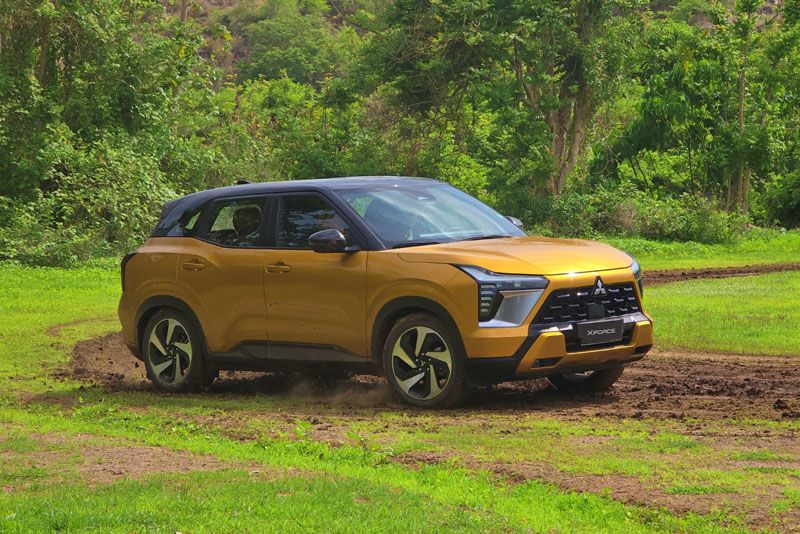
Under the hood, the Mitsubishi XForce is powered by a 1.5-liter in-line-four MIVEC engine, producing 105-Ps and 141-Nm of torque. This engine is shared with the current Xpander, and while these figures might seem modest, the engine is paired with a continuously variable transmission (CVT) instead that optimizes power delivery and fuel efficiency. The combination ensures a smooth and responsive driving experience, particularly in urban environments.

During an exclusive media drive, we were able to preview some of the car’s strengths and weaknesses. First, Mitsubishi highlighted the XForce's handling and drivetrain capabilities, taking it through various road conditions, including makeshift off-road courses which were meant to show off its track handling, mud capabilities, and advanced traction systems. The XForce features four primary driving modes: Normal, Wet, Gravel, and Mud. Each mode is tailored for specific driving conditions to enhance performance and safety. The Wet mode, designed for the ASEAN market instead of a Snow mode, emphasizes traction control and AYC (Active Yaw Control) to prevent slipping on wet surfaces. Adjustments are made to acceleration and steering to improve handling in wet conditions. The Gravel mode allows more slip for better maneuverability on loose surfaces, while the Mud mode minimizes AYC intervention to avoid getting stuck. The overall goal is to provide confidence and safety to drivers, especially beginners, in varying driving conditions.
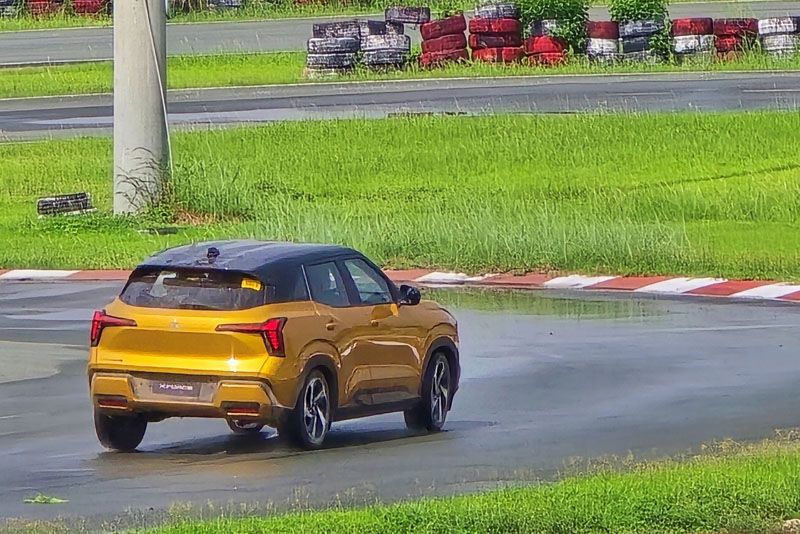
The XForce has a MacPherson front and torsion-beam rear setup. The vehicle's sport-tuned suspension, featuring rear shock absorbers from the Montero Sport, provides a robust and stable ride, albeit at the cost of some rear ride comfort. The steering is light and responsive, with a tight 5.2m turning radius, making it easy to maneuver in tight spaces. The drive modes adjust the responsiveness of the powertrain, Active Yaw Control, and steering to maintain control and stability. While it's not a substitute for an all-wheel-drive system, these features enhance the XForce's versatility on various surfaces. I was especially impressed with its performance in mud, with the steering and the body providing great feedback as to what the car is doing at any moment.
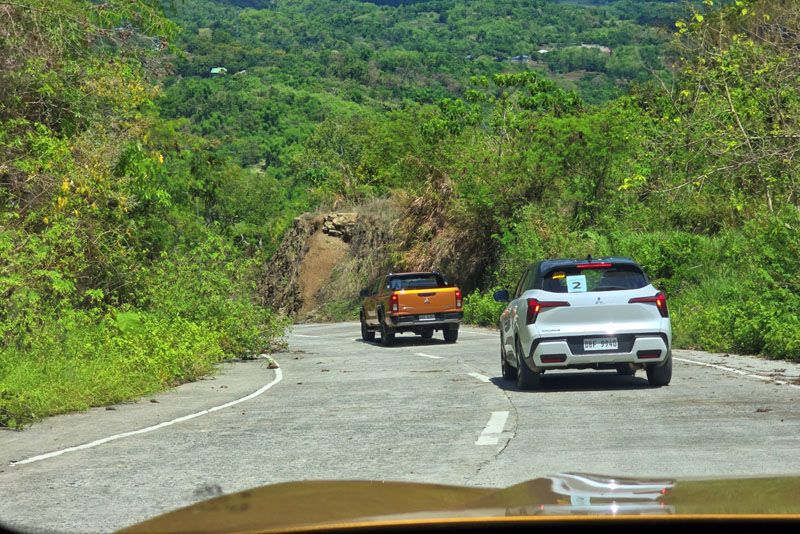
The CVT in the XForce has been calibrated to provide a balance between performance and efficiency. The CVT tuning allows for quick ratio adjustments depending on the car’s position, speed, and throttle input. This system allows the XForce to adapt to different driving conditions, providing a smooth and engaging driving experience. The Driving Score feature provides feedback on driving habits, while the Avionics screen offers detailed information like steering angle, tire pressure, g-force, and barometric pressure. These features are particularly useful for tech-savvy drivers who enjoy monitoring their vehicle's performance.
While our drive around La Union generally went without a hitch, one particular steep road (called Bilagan Road) going up to the Santol Viewdeck did give the CVT a hard time. Mitsubishi development driver and engineer Masahiro Tamura saw this as an atypical case, and with the proper driving speed, technique, and preparation, he believes such high-grade climbs are quite feasible.
One of the standout features of the XForce is its fuel efficiency. During the test drive, the vehicle achieved an impressive 13.0 km/L in mixed conditions including highway and small-town driving, and climbed up a mountain road. This makes it an attractive option for those seeking an economical yet stylish compact SUV. The fuel efficiency is complemented by the vehicle's low running costs, making it an ideal choice for budget-conscious buyers.
Practicality, safety and creature comforts
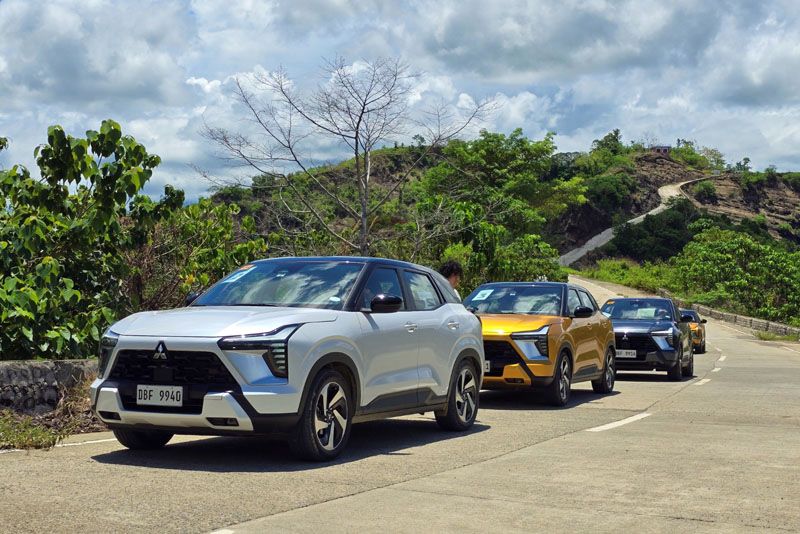
The interior offers ample storage space, including a small tray under the front passenger seat. The rear seats can be folded down to create a flat load floor, enhancing cargo capacity. The vehicle features an eight-speaker Dynamic Sound Yamaha Premium audio system, delivering impressive sound quality for an original equipment setup. Safety is a key focus for the XForce. The base GLS variant includes 18-inch wheels, all-disc brakes, fog lamps, stability control, traction control, and a reversing camera. The GT variant adds advanced driver aids such as adaptive cruise control, lane-departure warning, blind-spot warning, rear cross-traffic alert, and automatic high beams. Both variants are equipped with front and side airbags, with the GT also featuring curtain airbags. In terms of convenience, the XForce offers several thoughtful features. The dual-zone automatic climate control system, equipped with a Nanoe X filter, ensures a comfortable cabin environment. The GT variant also includes ambient lighting, automatic headlamps, rain-sensing wipers, and rear proximity sensors. These features enhance the overall driving experience and provide added peace of mind.
Market position

Mitsubishi is targeting the youthful market with the XForce, particularly those starting families who may not require the larger space of the Xpander. Priced at P1,367,000 for the GLS and P1,581,000 for the GT variant, the X-Force competes in a crowded and diverse segment. Mitsubishi believes that the combination of its stylish design, practical features, and impressive fuel efficiency will appeal to buyers, despite its modest power output. The XForce's competitive pricing positions it well against Japanese, Korean, and Chinese rivals. Mitsubishi's expertise in the ASEAN market, coupled with its strong brand reputation, provides a solid foundation for the X-Force's potential success.
With its aggressively sleek styling, practical interior, and focus on driving dynamics, it offers a compelling option for buyers. While it may not be the most powerful in its class, the XForce makes up for it with its well-rounded features and impressive fuel efficiency. During a Q&A session, Mitsubishi executives and engineers excitedly speculated at the possibility of a higher-performance version, identifying a hybrid powertrain and the 1.5-litre 4B40 turbo petrol from the Eclipse Cross as possible shoe-ins. Meanwhile, for those seeking a stylish and practical compact SUV, the Mitsubishi XForce is worth considering. The vehicle's impressive looks, advanced drivetrain technology, and versatile performance make it a standout choice in a competitive market.